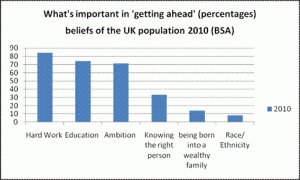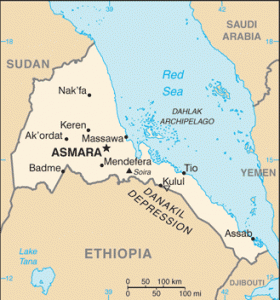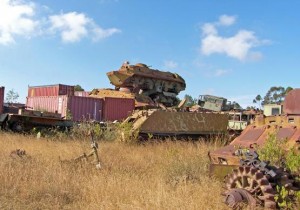I’ve traditionally regarded tourists flocking to a photo opportunity as no better than flies flocking to shit. OK the analogy doesn’t quite work, given that the tourist taking a photo is engaged in a conscious reflexive act, while the fly heading for shit is behaving unconsciously, but it’s too good an opening line to miss, and I think we can all agree that a gaggle of flies and a gaggle tourists are irritating in equal measure.
The inspiration for this post comes from a recent experience of tourists-obsessively-taking-photos – during an excursion between the city of Asmara and the hovel of Nefasit. In fairness to the tourists this particular excursion did provide for particularly excellent photo-opportunities given that the journey was on a restored steam train, originally engineered during the Fascist occupation of Eritrea in the 1930s, which romantically chuffed its way through dramatic mountainous dessert terrain (ya know – tunnels, bridges, etc), finally ending in a poverty stricken rural village full of desperately poor, but not starving, and thus photographically acceptable, children.
The train was occupied nearly exclusively by wealthy tourists – (no surprise given that a ticket cost $50 dollars, the equivalent of a month’s wages for the average Eritrean) –all of whom had cameras – and they spent most of the journey alternating between taking pictures and cycling through their camera menus to check the pictures they’d just taken, and then back to taking even more pictures.
Now the one big gripe I have against the whole tourist-on-holiday-photo-obsession thing is this – when someone sees an inspiring vista, for example, and takes a photo of it, to my mind what they are doing is forgoing the opportunity to ‘be in the moment as it actually is’ (i.e. enjoying the scenery) in order to represent the moment as it never was (by capturing the ‘moment’ you never fully experienced on camera).
The gripe is rooted in the fact that I’m a big believer of being consciously rooted in the moment – being aware of whatever comes up – good or bad –that is, actually living in the moment. Surely the whole act of taking photos takes the individual away from the lived experience of the actual moment as it happens, away from our actual life as it really is?
In order to put this long held theory (some may say prejudice – although they would be wrong) to the test I decided to forgo taking in the scenery first hand, and instead donned a camera, and immersed myself in the touristic mire, and joined the merry throng of happy snappers. During the journey, we enthusiastically threw ourselves from left to right, or rushed back to front, to capture various images of the dramatic scenery –clickity clicking to the train’s chuffity chuffing.
As a result, I have a rare photographic account of half day in the life of Karl. What I find most interesting is just how totally unrepresentative these images of the day’s events are, as well as how little information they provide about the broader context of the excursion.
Just some of what the photographic account misses is the following – The sense of mild boredom as the train waits at the station in the morning for 30 minutes; the sense of my general irritation of not being able to get a ‘pure shot’ of the landscape because all the other bloody tourists are getting in the way; inevitably landscape photography can never portray the actual excitement of being there; once we’d stopped in Nefasit, you get no sense of the aimless meanderings of the tourists and their range of embarrassed reactions as the cheeky, local poor children hassle them for pens; and no sense of my thinking ‘ is this it? – One train line in the whole in country and it ends at this dead end place; photos give you get no sense of the mild frustration of having to hang around for an hour and a half while the steam engine built up steam on the three stops it made on the return journey; and finally photographs don’t portray the headache and sick feeling that started to build up on said return journey – a sickness that got much worse later that day resulting in my lying in bed for the next day and a half – and of course the later event, which lasted four times as long as the train excursion, is not captured on camera, even though the experience of it was just as real.
So at the end of the day, my photos are not telling you about my actual experience of this half a day of my holiday, they are providing you with a highly selective account that gives you no meaningful insight into the actual context in which the pictures were set. In fact I don’t believe that it would actually be possible to reliably reproduce with any level of accuracy my actual experience of that half day. Photos can help provide an insight, but words, preferably delivered face to face, are necessary.
Now if I have come to the conclusion that it is impossible to faithfully reproduce the experience through the medium of photography, then it is reasonable to assume that others are able to do so. So if people don’t take photos to reliably reproduce lived experiences then why do people take photos?
Why do people take photos?
While there are many individual-level reasons why people will take will take photos, in many instances, the actual act of photo taking is just the first stage in the broader process of identity construction. This broader process, of taking, selecting, and presenting photos, is all part of constructing what Anthony Giddens would call a ‘narrative of the self’ – one takes photos in order to publish them, along with a series of other photos from other places and other times, which together tell the ‘story of one’s self’. Typically this presentation will be done through a social networking site such as Flickr or face book, or, for those closer friends and family, photos might be shared through a face to face session mediated through the computer or television.
So going back to my original ‘tourist-on-the-train scenario’ – when tourists take photos the chances are that they will be spending some of their time thinking about how one’s current photos compare and relate to one’s previous photos as well as contemplating how various members of one’s audience will react to some of the photos being taken – photos, in other words, may well be taken in the present, but they are taken with the past, and especially the future in mind. Of crucial importance to most people’s photo taking here is the fact that photos are not merely taken for private enjoyment, they are taken with the intention of sharing them with others – photos are to be shared, they are not a private act but a public act – and this means there are a number of things we expect from our potential audience when photographing our lives.
Taking photos – sharing photos
The expectations of, or the demands we make on, our prospective audiences of course depends on the forum in which we intend to share our photos – sharing photos on Faceboook with hundreds of ‘friends’ is clearly different to sharing photos with closer friends in a face to face to face setting – but with both we are assuming certain things.
Firstly, when we display our photos we expect some kind of reaction – rather than no reaction – people don’t generally put photos on display to illicit zero affect – we except some kind of interest from at least some people.
Secondly, we probably expect this reaction to be positive rather than negative, we expect people to affirm that the events depicted are as special, exciting, dramatic, or as fun as we ourselves imagine them to have been. Even better would be comments affirming that we are ‘looking good’, and I imagine that the holy grail of positive commentary would be an affirmation that the photos we have taken, in conjunction with previous arrays of photos, confirm something about me as a person – ‘x loves his holidays’, ‘there’s y in da club – what a party girl’ – etc. etc. yada yada yada.
Thirdly, one might expect some kind of slightly deeper and more qualitative interaction based on shared experience – someone else may comment in more depth on one’s photos having been to the same destination or club for example. This is much more likely if photos are being shared with closer friends in a face to face context, which will allow for the possibility of some more detailed commentary on the photos and for some deeper questioning on the part of the audience about the context in which the photos were taken, and possibly about the rational for selecting certain photos over others.
In either case, what one doesn’t expect is disinterest or honesty – when one displays one photos, and thus when one takes one’s photo’s, one is expecting a positive reaction from one’s friends and family that affirms their positive life experiences and their own selective understanding of their self-identity.
Gatekeeping and the process of selecting photos for public consumption
Even in the initial phase of taking the photo, people are already involved in the process of gatekeeping – as taking photos involve selecting certain shots over others. Also, and contrary to popular opinion, one’s photographic repertoire probably doesn’t arise out of decisions freely made – the choices about what to take photos of and which ones to later display and which ones to exclude – are not choices freely made – rather they fit in with a set of pre-existing norms of photographic display – to go back to the example of the train – landscape pictures were definitely in, as were pictures of hovels in the landscape. Pictures of the train and train staff seemed to be popular, but I noticed very few people taking photos of tourists taking photos – which was the overriding theme of the journey in my mind. Furthermore, people were less inclined to take photos of Nefasitians in poverty, or of the juxtaposition between the poor children and wealthy tourists. So there were definitely general rules of photographic gatekeeping applied to the experience.
To generalize this out from the specific issue of holiday- snaps, a quick analysis on Facebook reveals that there are a set of rules that apply more generally to the selection and presentation of self through the static visual medium of the photograph.
- Photos will typically be of leisure activities not work activities
- Photos will typically be taken out in the public realm, not at home, except for when one hosts a party, is about to go to a party, or at Christmas. Good public venues for photos include pubs and night clubs, spaces with scenic vistas, and global cities.
- Photos will typically be of the subject and at least one other person, although the occasional photo of the subject alone is acceptable.
- Photos will be of the subject and friends engaged in ‘fun activities’
- Photos will be selected that always capture the subject, but necessarily all of one’s friends, in a flattering light.
- There will be a disproportionate amount of photos showing the subject doing atypical activities – such as ‘holiday snaps’ (going on holiday is, in reality, unusual, but it becomes usual on Facebook.
- Some photos will be of a humorous nature – fancy dress photos and silly poses are a good way of indicating that the subject has a sense of humour.
OK so there are some odd profiles that diverge from the rules above, these are just the general rules of expressing self identity through the static visual medium of the photo album. What conformity to these rules means, of course, is that the images with which we are presented are not indicative of the actual lived experience of the actual events that took place.
According to Jean Baudrillard, what we are effectively doing on Facebook is constructing a form of hyperreality – to go back to my example of the train journey -the actual event – the actual 6 hour train excursion is left behind – on Facebook I reconstitute it as something new and different in a virtual space – the actual event doesn’t matter – what becomes significant is the photographic storyboard I display – these selected fragments of the event become the new reality – more important than the actual reality – it is these flash points of the actual day which will be the things that people identify me with, these selected moments that I get remembered for, and it is these things that I will expect to discuss with friends in the future.
But there is another level of removal from reality – typically, the photos one takes of a particular event once uploaded to whatever social networking medium one prefers, will merge with other photos of other events – so say one has been on Facebook for half a decade and has hundreds or thousands of unrepresentative photos – what you end up with is a hyper-real social identity that is in no way indicative of the actual self being represented.
Conclusion – taking, selecting and presenting photos for public consumption – creating a fiction.
So taking photos means that we forgo the chance to merge the self with the actual experience and become one with the moment and instead we distance ourselves from the moment so that we can capture the experience on camera. We then combine some of the images taken with a selection of other images and present this visual collage to others, constructing, in Gidden’s terminology, a narrative of the self, and thereby a social identity more generally.
An important part of this process is that others reflect and comment on the selection of images that make up my ‘self-narrative’, reinforcing the idea that the atypical, exciting, fun, and dramatic events selected are of intrinsic value and should be those things which I identify with, and, simultaneously, that the typical, mundane events that I spend most of my time engaged in are not worthy of social commentary and not significant enough to be constitutive of my self- identity.
Of course in order for me to reasonably expect people to reflect upon and reinforce my visually mediated construction of my own self-identity I must reciprocate by reflecting and commenting on other people’s ‘self narratives’ – this ultimately means that this whole process of taking, selecting and presenting photos for public consumption forms the basis of fictitious relationships in which we relate to each other on the basis of a hyperreal representation of a tiny proportion of our actual life experiences – and this representation is typically an unrealistic selection of the exotic, the fun, the good, the desirable.
So I guess what I’ve taken 2500 words to say is that the reason I am slightly uncomfortable with the act of taking photos is that all too often this act perpetuates a collective denial of the reality of lived experience – an experience which is much more up and down , involves much more suffering, and much more mundanity than the images of life and the narratives of self that we construct for public consumption through our social profiles would suggest.
Given that I don’t want anyone to understand and relate to me through an account of my life which is so partial that it amounts to fiction, I think in future I may leave photography and the construction of the virtual narrative of self for others.








